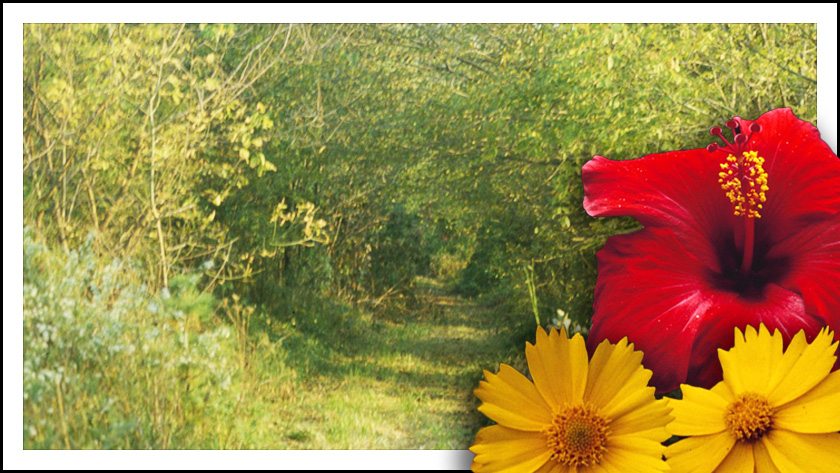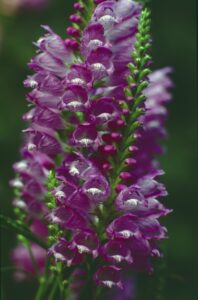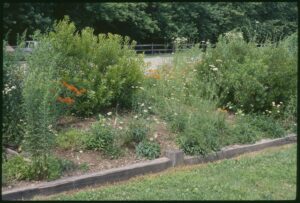
A photograph of the walking trail at Turtle Creek from the Armistead W. Browning Jr. Papers, and photographs of a hibiscus and coreopsis from the Franklin C. Daiber Botanical Collection.
Garden Spots: Photography of the Natural World
By David Cardillo, Digital Initiatives and Preservation Department
March is the month of green. People don the color for St. Patrick’s Day, and as the first day of spring approaches, grass in the area begins to change from dormant brown to vibrant green.

A photograph of a False Dragon Head from the Franklin C. Daiber Botanical Collection.
Alas, not every place experiences spring at the same time or to the same degree. So if a barren, mayhaps even a snow-covered tundra stares back at you from the window this March, then we have something to bring that pop of fresh and lively green to you!
The Franklin C. Daiber Botanical Collection contains more than 7,000 images of various flower and plant specimens photographed by Daiber in the mid-Atlantic region from 1975-1999. In 2014-2015, the Library, Museums and Press digitized the collection and made almost 500 images publicly available via Artstor.
Daiber, professor emeritus of marine studies at the University of Delaware, was instrumental in the establishment of the College of Marine Studies – now known as the College of Earth, Ocean and Environment – in 1970. The collection reflects his longtime interest in both photography and the study of natural phenomena.

A photograph of a garden at the Brandywine Conservancy from the Armistead W. Browning Jr. Papers.
In contrast, the slide collection of landscape artist Armistead W. Browning Jr. reflects landscape scenes that he created and that inspired his work. He was an accomplished and prolific photographer of the landscape and the natural world.
With strong ties to the mid-Atlantic region, Browning dedicated his life to environmental preservation and education. Similar to the Daiber slide collection, more than 10,000 materials from this collection have been digitized. Those publicly available via Artstor represent just a portion of what you can access for research and education through Special Collections.
The Franklin C. Daiber Botanical Collection and the Armistead W. Browning Jr. Papers both feature large collections of photography slides of the natural world. These materials are available within Special Collections, with many items from each publicly available via Artstor. Those with research interests related to nature, environmentalism and photography will find these collections to be particularly valuable resources.
